Stages of Fabric Dyeing
🎨 Understanding the stages of fabric dyeing helps identify fabric types and predict how they behave in different projects. Let’s explore each dyeing stage and learn how to identify them.
Four Main Stages of Dyeing
1. Fiber Stage Dyeing
- Dye is applied to loose fibers before spinning into yarn
- Creates deeply saturated, colorfast fabrics
- Often used in high-end wool and synthetic fabrics
- Look for: Even color distribution and slight color variations within individual fibers
Common Examples:
- Solution-dyed outdoor fabrics (Sunbrella®)
- High-performance athletic wear
- Colorfast acrylic yarns for knitting
- Premium wool suiting materials
- Synthetic fleece fabrics
2. Yarn Stage Dyeing

Novelty Suiting (Front)
Yarn dyed: Same on both sides with a heathered look.
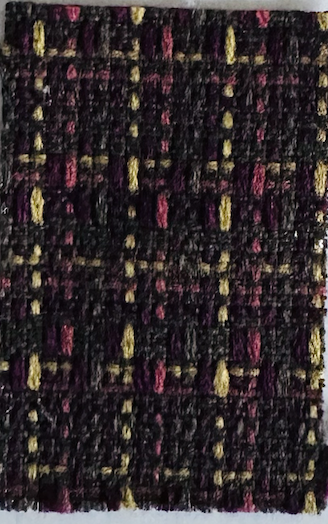
Novelty Suiting (Back)
Yarn dyed: Identical to the front, maintaining consistency.
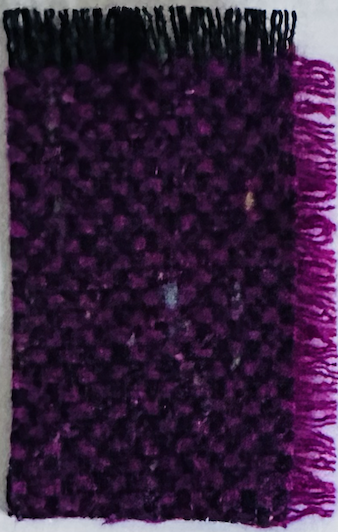
Basket Weave (Front)
Yarn dyed: Visible texture with the same color on both sides.
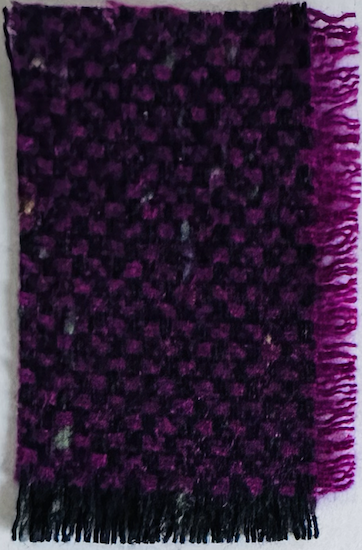
Basket Weave (Back)
Yarn dyed: Consistent heathered texture.
Key Characteristics:
- Same color on both sides
- Distinctive heathered appearance
- Common in: plaids, denims, tweeds
- Often shows color variation when yarns overlap
- More expensive but creates unique patterns
3. Fabric/Piece Dyeing
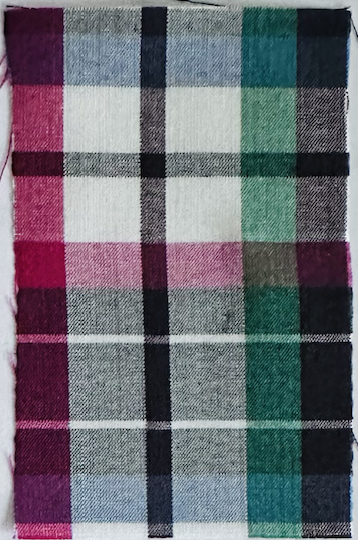
Silk Plaid (Front)
Piece dyed: Smooth finish, identical on both sides without a heathered look.
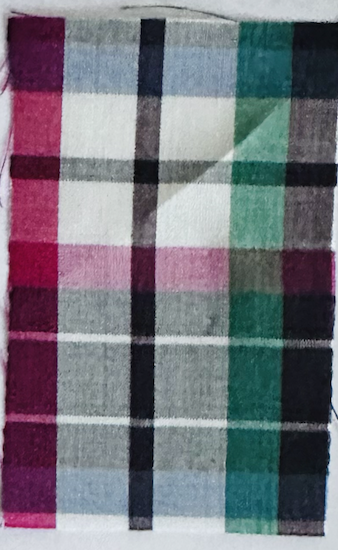
Silk Plaid (Back)
Piece dyed: Uniform color on both sides.
Key Characteristics:
- Dye applied to finished fabric before garment construction
- Uniform color throughout
- No heathered effect
- Most common and economical method
- Often slightly different color on reverse
- Used for solid-colored fabrics
Common Examples:
- Solid-colored quilting cotton
- Dyed silk charmeuse
- Colored linen for garments
- Solid cotton jersey
- Dyed canvas for bags
4. Garment Dyeing

Tie Dye T-Shirt (Front)
Garment dyed: Irregular pattern and color variations.
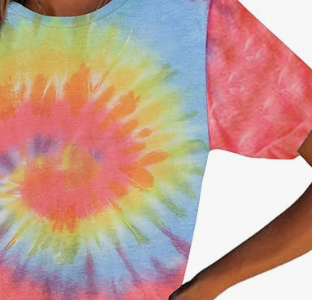
Tie Dye T-Shirt (Back)
Garment dyed: Slightly faded on the reverse side.
Key Characteristics:
- Done after garment construction
- May show dye variation at seams
- Thread color might differ from fabric
- Often used for casual wear
- Can create unique effects like tie-dye
How to Observe Dyeing Techniques
Visual Clues
- Check Both Sides
- Yarn-dyed: Identical on both sides
- Piece-dyed: May show slight differences
- Garment-dyed: Often uneven, especially at seams
- Examine the Texture
- Yarn-dyed: Heathered look where yarns cross
- Piece-dyed: Smooth, uniform color
- Fiber-dyed: Deep, rich color throughout
- Look at Construction Details
- Thread color matching
- Seam color consistency
- Color penetration at folds
Common Examples
- Yarn-Dyed: Oxford shirts, tartans, denim
- Piece-Dyed: Solid color bedsheets, basic t-shirts
- Garment-Dyed: Casual wear, vintage-look items
- Fiber-Dyed: High-end woolens, performance wear
Fabric Dyeing Recap
✅ Fiber Dyed: Deepest color penetration, highest colorfastness
✅ Yarn Dyed: Same color on both sides, heathered look
✅ Piece Dyed: Consistent color without heathered texture
✅ Garment Dyed: Irregular patterns, visible at seams
Practice Exercise
👉 Examine your wardrobe and try to identify:
- A yarn-dyed plaid shirt
- A piece-dyed solid t-shirt
- A garment-dyed item
- Look for the characteristics we discussed!
Bonus Tips
- 🔍 Use a magnifying glass to examine yarn crossings
- ☀️ Natural light shows true colors best
- ✂️ Check seam allowances for color differences
- 💧 Observe how different dye methods affect fabric drape
Pro Tips
- Check both sides of the fabric to determine dyeing method
- Yarn-dyed fabrics often have a heathered look
- Use natural light when examining fabrics
- Look at seams and thread color in garment-dyed pieces